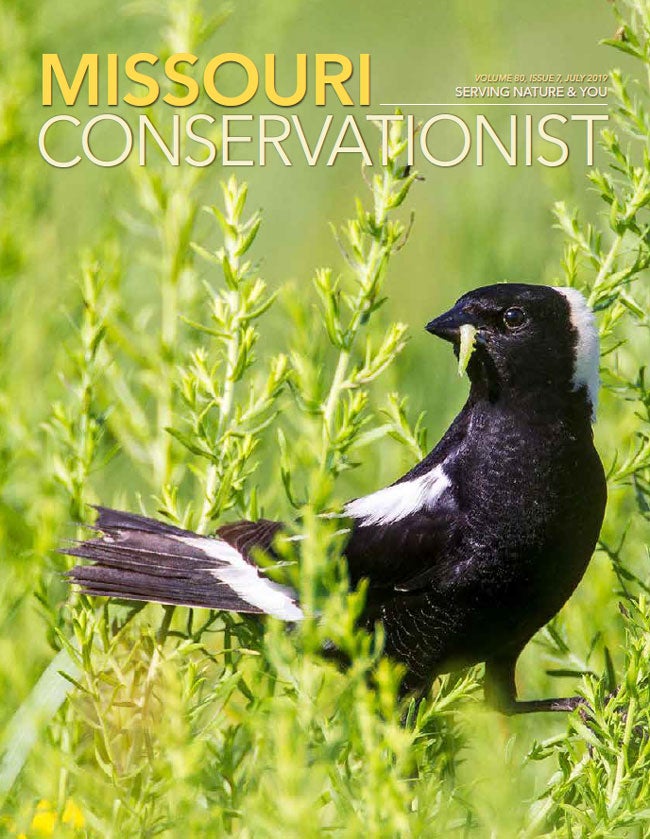Each month, we highlight research MDC uses to improve fish, forest, and wildlife management.
Species of Conservation Concern
Bats and Wind Energy
As entities consider more wind energy projects in Missouri, the state’s bats face the threats of habitat loss and devastating diseases like whitenose syndrome. What level of wind-generated power development can occur without further harming already-stressed bat populations?
Missouri State Bat Ecologist Kathryn Womack-Bulliner has been working with the U.S. Fish and Wildlife Service to estimate the occupancy of bats in areas of likely wind energy development in the Show-Me State.
Their goal is to understand bat species occupancy prior to wind energy development to better advise developers how they can “reduce the impact to Missouri’s fish, forest, and wildlife species that we all love,” she said. “These include federally listed species, Missouri species of conservation concern, and also to provide siting considerations in relation to MDC conservation areas.”
Understanding whether wind turbine-caused bat fatalities in an area could cause bat population declines requires data.
To fill this information gap, study partners conducted 4,269 detector nights of acoustical monitoring at 120 sites in north Missouri.
Overall, the study found that patterns of bat occupancy are species-specific, making it difficult to develop blanket guidance for the placement of wind turbines. “Each wind-development site has different fish, forest, and wildlife concerns,” Womack-Bulliner said. “Therefore, it is critical to look at site-specific risks to understand the potential impacts and to focus mitigation efforts.”
Bats and Wind Energy at a Glance
Study Period:
Spring, Summer, and Fall of 2013–2017
120 Study Sites
4,269 Detector Nights of Monitoring
Study partners placed acoustic detectors at sites where wind energy development is suitable, and bats were likely to occur for at least three nights per season. They recorded and identified bat echolocation calls using an automated ID program and expertise to determine occupancy at a site each night.
9 Species Detected
3 Federally Listed
- Indiana bat
- Gray bat
- Northern long-eared bat
4 Missouri Species of Conservation Concern
- Silver-haired bat
- Hoary bat
- Little brown bat
- Tri-colored bat
2 Other Species
- Eastern red bat
- Evening bat
This Issue's Staff
Associate Editor - Larry Archer
Staff Writer - Bonnie Chasteen
Staff Writer - Heather Feeler
Staff Writer - Kristie Hilgedick
Staff Writer - Joe Jerek
Creative Director - Stephanie Thurber
Art Director - Cliff White
Designer - Les Fortenberry
Designer - Marci Porter
Photographer - Noppadol Paothong
Photographer - David Stonner
Circulation - Laura Scheuler






















